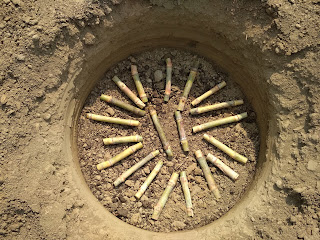Production of Azotobacter chroococcum (Biofertilizer)

A. Purpose: The soil having poor organic carbon and microbes therefore, need of application of Azotobacter chroococcum is needed to enhance soil fertility. B. Scope: Biofertilizer has been identified as an alternative to chemical fertilizer to increase soil fertility and crop production in sustainable farming. The use of biofertilizer is steadily increased in agriculture and offers an attractive way to replace chemical fertilizers, pesticides, and supplements. The main objective of this study is to evaluate the effect of Azotobacter chroococcum as nitrogen-biofertilizer on growth and yield of Cucumis sativus (cucumber) under greenhouse conditions. The study was done by planting 210 cucumber seeds distributed into seven treatments which were used in our study as follows: control (without treatment), biofertilizer only, organic fertilizer only, chemical fertilizer only, organic fertilizer + biofertilizer, 20% chemical fertilizer + biofertilizer, and biofertil


